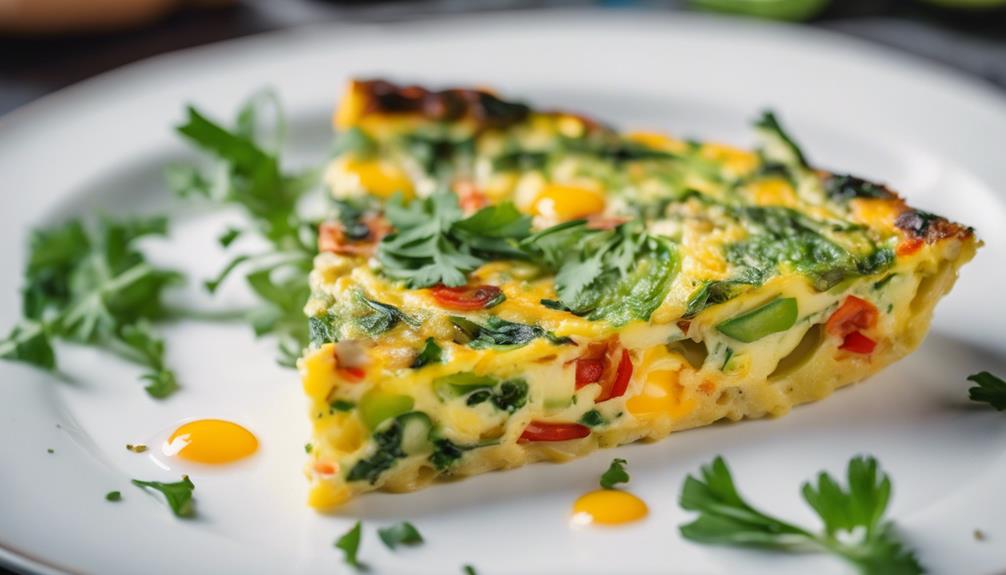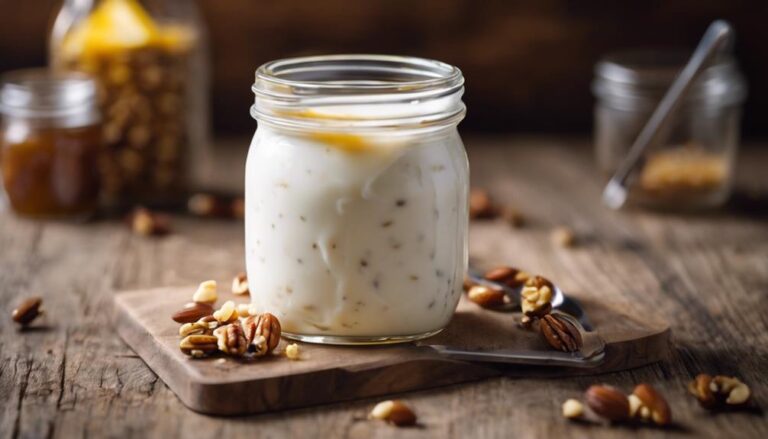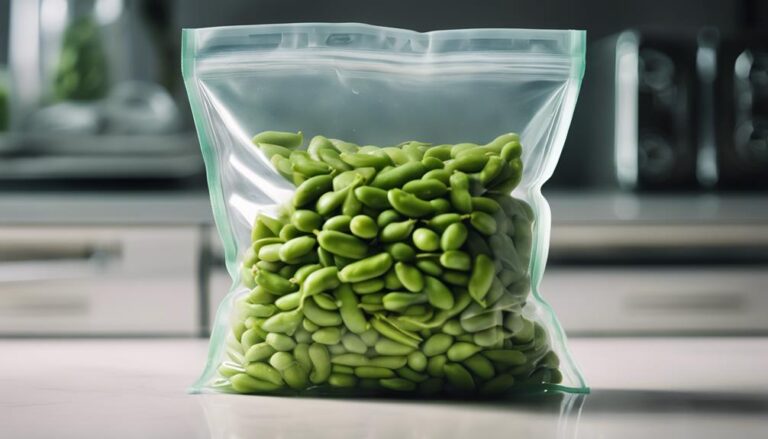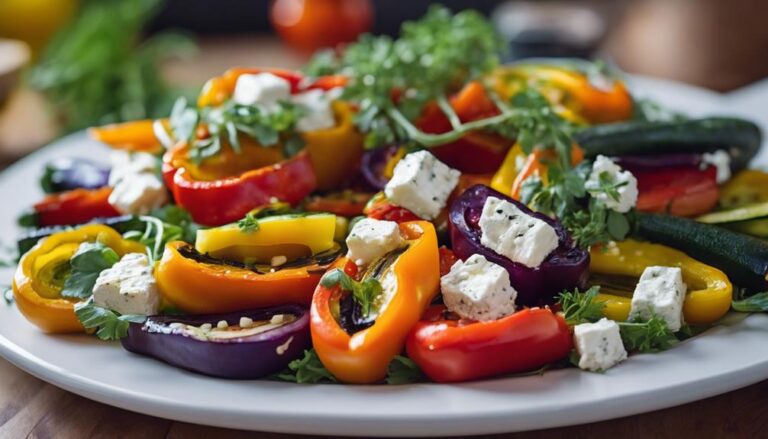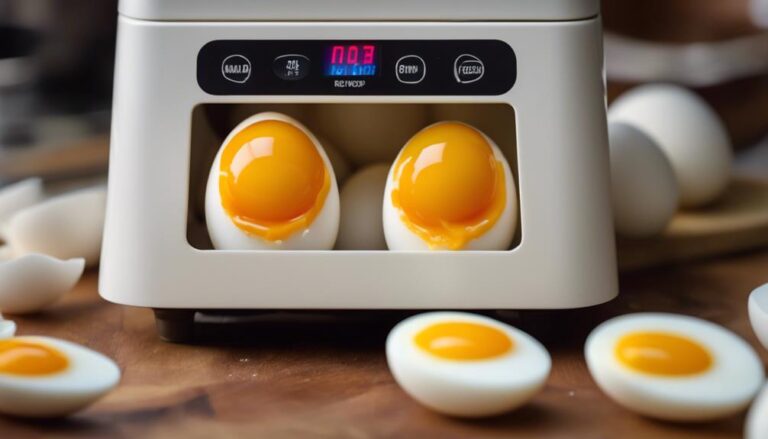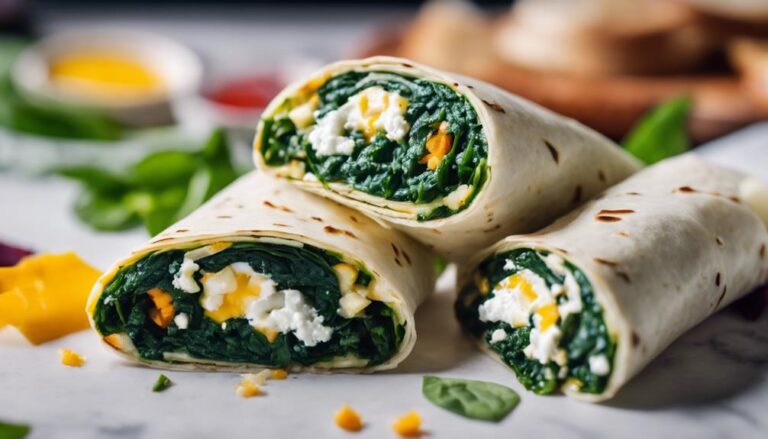Sous Vide Egg and Veggie Frittata: A Perfect 5 Factor Diet Breakfast
For a nutritious 5 Factor Diet breakfast, try a sous vide egg and veggie frittata. Sous vide provides precise control, retaining nutrients and flavors for a delicious outcome. Fresh, free-range eggs, colorful veggies like bell peppers and spinach, and quality cheeses like cheddar or feta are key components. Customize with your favorite ingredients for endless flavor combinations. Experiment with different cooking temperatures to achieve your desired texture – softer and creamier at lower temps or firmer with slight browning at higher. Sous vide offers versatility for batch cooking and meal prepping. Enjoy a nutrient-rich frittata tailored to your dietary needs.
What You Will Learn Here
- Sous vide cooking ensures precise temperature control for a consistent frittata texture.
- Frittatas with veggies offer nutrient-rich breakfast options for a balanced diet.
- Customize frittatas with colorful veggies and high-quality eggs for optimal nutrition.
- Experiment with various veggies and cheeses to tailor frittatas to 5 Factor Diet requirements.
- Sous vide method retains flavors and nutrients, ideal for healthy breakfast meal prepping.
Frittata Origins
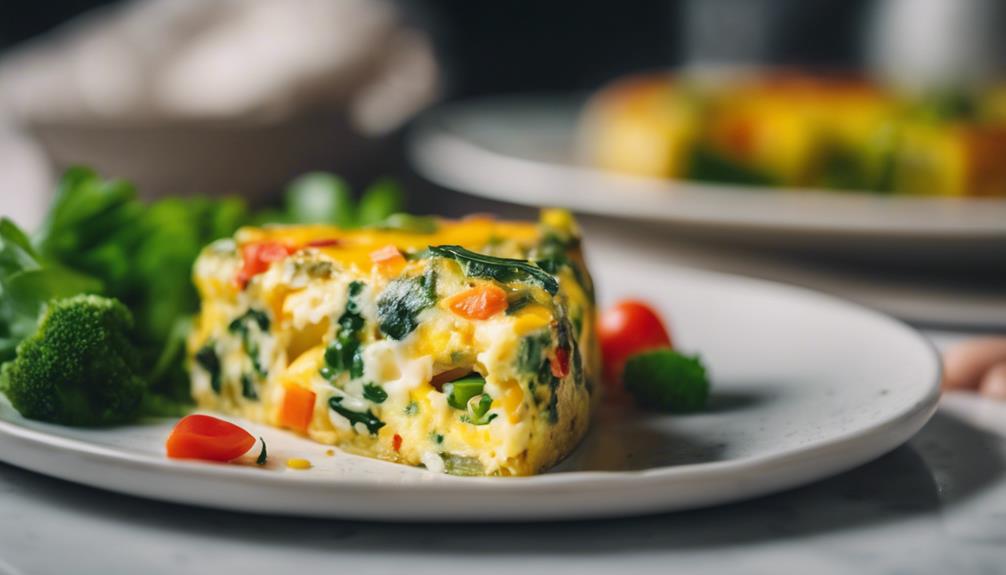
Frittata, originating from Italy, is a versatile egg dish that has gained popularity worldwide. It differs from quiche in that it's crustless and cooked entirely on the stovetop or in the oven.
Today, frittatas have evolved to include various fillings, making them a customizable and delicious option for any meal.
Frittata's Italian Roots
Having originated in Italy, the frittata is a versatile egg-based dish loved for its simplicity and flavor. This classic dish is a staple of Italian cuisine, often enjoyed as a breakfast favorite. The word 'frittata' itself comes from the Italian verb 'friggere,' meaning 'to fry,' reflecting the cooking method of this delicious dish.
In Italy, frittatas are commonly made with a variety of ingredients such as fresh vegetables, herbs, cheeses, and meats, creating endless possibilities for flavor combinations. The frittata's Italian roots showcase the country's culinary tradition of using simple, high-quality ingredients to create dishes that are both satisfying and delicious.
Italian frittatas are typically cooked in a skillet on the stovetop and then finished in the oven, resulting in a fluffy and tender texture. This cooking method allows the ingredients to meld together while creating a golden crust on the outside.
The frittata's Italian heritage shines through in its ability to be effortlessly elegant yet comforting and hearty—a perfect dish to serve your loved ones.
Frittata Vs. Quiche
Italian frittatas and quiches are often compared due to their similar egg-based compositions and culinary versatility. While frittatas are known for their firm consistency, quiches stand out for their flaky crusts. Frittatas, originating from Italy, are typically made without a crust, giving them a denser texture compared to the light and delicate quiche crust. The frittata consistency is more akin to a thick omelet, making it easier to serve in slices without the need for a supporting base.
In contrast, quiches, a French creation, feature a buttery pastry crust that encases the creamy egg filling. The presence of this crust gives quiches a tender and flaky texture, setting them apart from the more substantial frittatas.
When considering which dish to serve, the choice between a frittata with its hearty texture and a quiche with its buttery crust depends on whether you prefer a denser, crustless option or a lighter, pastry-filled treat.
Frittata Evolution Today
Originating from Italian cuisine, the frittata has evolved over time to become a versatile dish enjoyed in various culinary traditions worldwide. In modern times, chefs and home cooks alike have put their own creative twists on this classic egg dish, leading to a plethora of exciting adaptations.
From adding unique ingredients like truffle oil or exotic cheeses to experimenting with unconventional cooking methods such as baking individual frittatas in muffin tins, the frittata has seen a resurgence in popularity due to its adaptability.
One of the most notable modern adaptations of the frittata is the incorporation of diverse vegetables, meats, and herbs, creating an endless array of flavor combinations. This evolution allows for customization based on personal preferences and dietary restrictions, making the frittata a go-to option for many looking to enjoy a nutritious and delicious meal.
Whether served hot or cold, for breakfast, brunch, or dinner, the frittata continues to captivate food enthusiasts with its versatility and potential for culinary experimentation.
Key Frittata Components
You consistently need to focus on selecting fresh and high-quality ingredients for your frittata to guarantee a flavorful outcome.
When preparing your frittata, keep in mind the following key components:
- Eggs: Using fresh, free-range eggs will enhance the overall taste and texture of your frittata.
- Veggies: Incorporating a variety of colorful and nutrient-rich vegetables such as bell peppers, spinach, and cherry tomatoes not only adds flavor but also boosts the nutritional value of your dish.
- Cheese: Opt for high-quality cheeses like sharp cheddar or feta to provide a rich and creamy consistency to your frittata.
Top Frittata Variations
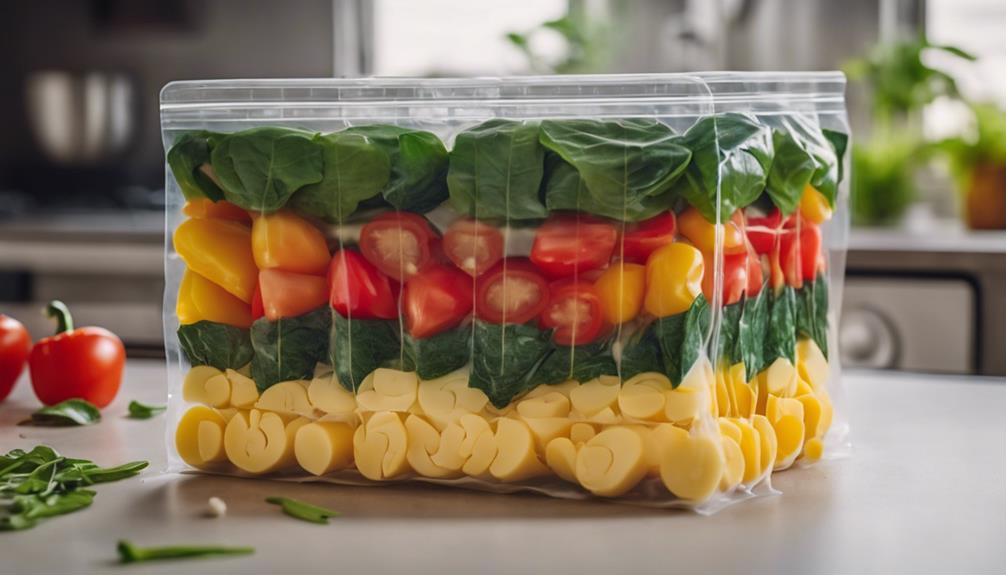
When it comes to frittatas, the classic recipe is a go-to option. It incorporates eggs, cheese, and a variety of veggies, creating a satisfying dish.
Stay tuned to learn how to make this timeless favorite!
Classic Frittata Recipe
Consider trying out a classic frittata recipe for a versatile and delicious meal option. Making a frittata is a simple and satisfying way to enjoy a nutritious dish that can be customized to suit your taste preferences. Here are some tips to guide you through the process:
- Frittata Cooking:
Start by whisking together eggs, milk, salt, and pepper in a bowl. In a skillet, cook your choice of veggies and protein in olive oil until tender. Pour the egg mixture over the ingredients in the skillet and cook until the edges set. Finish the frittata in the oven until the top is golden and the center is cooked through.
- Frittata Ingredients:
Choose a variety of fresh vegetables like spinach, bell peppers, and tomatoes to add color and flavor. Incorporate cooked meats such as ham, bacon, or sausage for a protein boost. Don't forget to include cheese like cheddar or feta for a creamy texture and rich taste.
Frittata Texture Tips
To achieve a fluffy egg texture in your frittata, make sure you whisk the eggs thoroughly before cooking.
Distribute the veggies evenly throughout the frittata to guarantee each bite is packed with flavor.
Control the moisture content by sautéing vegetables before adding them to the egg mixture.
Fluffy Egg Texture
Attain a fluffy texture in your sous vide egg and veggie frittata by incorporating whipped eggs into the mixture. To create that perfect fluffy egg texture, consider using cooking techniques that involve gently folding whipped eggs into your frittata mixture.
When preparing your sous vide frittata, the sous vide method guarantees that the eggs are cooked precisely at a consistent temperature, resulting in a velvety and custard-like texture. Whipping the eggs before adding them to the frittata mix incorporates air into the mixture, giving the frittata a light and airy consistency.
To achieve the best fluffy egg texture in your frittata, beat the eggs until they're frothy and then gently fold them into your cooked vegetables and other ingredients. This method helps maintain the fluffiness of the eggs while ensuring even distribution of ingredients throughout the frittata.
Even Veggie Distribution
For a well-balanced frittata texture, evenly distribute the veggies throughout the egg mixture before cooking. Proper veggie slicing guarantees each bite is filled with delicious flavors.
When prepping your ingredients for sous vide cooking, take the time to cut the vegetables into uniform sizes to secure even cooking. This way, every mouthful will offer a delightful combination of eggs and veggies in every bite.
When mixing the veggies into the eggs, be sure to fold them gently to avoid breaking up the pieces. This step helps in creating a cohesive texture throughout the frittata. Even distribution of the veggies guarantees each slice will have the perfect balance of ingredients.
To achieve this, pay attention to the arrangement of the vegetables as you pour the egg mixture into the cooking vessel.
Moisture Control Techniques
Maintaining ideal moisture levels in your frittata is essential for achieving a perfect texture. To control moisture, consider vacuum sealing your ingredients before cooking. This technique helps lock in the natural juices of the veggies and eggs, preventing excess moisture from seeping out during the cooking process.
When setting the cooking temperature for your sous vide frittata, it's pivotal to strike a balance. Cooking at a slightly lower temperature for a longer duration can result in a softer and creamier texture, ideal for those who prefer a more custard-like consistency.
On the other hand, cooking at a slightly higher temperature for a shorter time can yield a firmer texture with a slight browning on the edges, appealing to those who enjoy a denser frittata.
Experiment with different cooking temperatures and vacuum sealing methods to find the perfect moisture level that suits your taste preferences. By mastering these moisture control techniques, you can elevate your frittata game and serve a breakfast that delights with every bite.
Final Thoughts

Consider reflecting on your experience with this Sous Vide Egg and Veggie Frittata recipe to identify any personal preferences or modifications for future preparations. Embracing the Sous Vide benefits for a healthy breakfast, you may have found the precise cooking method to enhance the flavors and textures of this dish.
As you explore frittata customization and flavor options, think about incorporating your favorite vegetables, cheeses, or herbs to tailor the recipe to your taste preferences. Whether you prefer a classic frittata with spinach and feta or a more adventurous version with sun-dried tomatoes and goat cheese, the beauty of this dish lies in its versatility.
Frequently Asked Questions
Can I Prepare a Frittata in Advance and Reheat It Later?
Yes, you can prepare a frittata in advance and reheat it later. For best results, consider using the oven or a skillet to reheat your frittata. These frittata reheating tips can help maintain its delicious flavor and texture.
How Long Can a Frittata Be Stored in the Fridge?
You can store a frittata in the fridge for up to 4 days. When meal prepping, remember to factor in the expiration date. For best results when reheating, use the oven or stovetop to maintain its delicious taste.
Can I Freeze a Frittata for Later Consumption?
Yes, you can freeze a frittata for later consumption. It's a great option for frittata meal prep. Simply allow it to cool, wrap it well to prevent freezer burn, and enjoy a quick, delicious meal anytime.
Is It Necessary to Pre-Cook Veggies Before Adding Them to the Frittata?
Save time by adding veggies directly to your frittata. Cooking them beforehand isn't necessary for a satisfying texture. Simplify your meal prep and enjoy a flavorful dish with minimal effort.
Can I Substitute Dairy Milk With Non-Dairy Alternatives in the Frittata Recipe?
Yes, you can substitute dairy milk with non-dairy alternatives in the recipe modification. This adjustment caters to various dietary needs and preferences, ensuring inclusivity and allowing more individuals to enjoy the frittata without compromising on taste or quality.
Conclusion
To sum up, the sous vide egg and veggie frittata is a delicious and nutritious option for a 5 factor diet breakfast. With its versatility and ease of preparation, it makes for a satisfying meal that can be enjoyed by all.
By following the key components and tips outlined in this article, you can create your own perfect frittata to start your day off right.
So why not give it a try and see for yourself the benefits of this flavorful dish?
